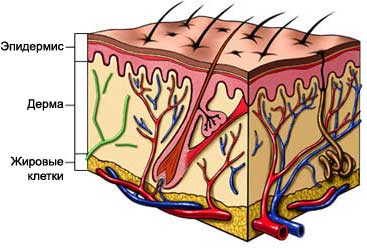Dermatofibroma – Gistiocitoma – Dermatofiʙroma
Description fibroids skin
Dermatofibroma is a very common skin disorder. This is a small bump on the skin, which arises as a result of overgrowth of tissue, located between the outer and inner layers of the skin. Dermatofiʙroma, usually, It has a pinkish-brown color and is often found on the legs. Dermatofibroma usually occurs as single growths and has no symptoms. Sometimes there is more than one build-up. They are harmless and have no connection to skin cancer.

Causes skin fibroma
The exact cause of dermatofibroma is unknown. As expected, it may appear after a minor trauma to the skin, such as an insect bite or a prick.
Risk Factors dermatofibromas
Factors, which increase the likelihood of skin fibroma:
- Paul: women often appears Dermatofibroma, than men;
- Age: average age (Dermatofibroma rare in children).
Symptoms dermatofibromas
Dermatofibroma rarely causes symptoms. Nonetheless, You need to see a doctor if you have any skin growths.
Signs are dermatofibromas:
- Usually reddish-brown in color;
- Color may change over time;
- It appears most often on the legs, but it may also appear on the arms or trunk;
- Small size (3-10 mm);
- Very firm to touch;
- Occasionally itchy or sensitive when touched;
- Growths on the skin may bleed if damaged (eg, shaving).
Diagnosis dermatofibromas
The doctor will ask about your symptoms and history of the emergence of skin fibromas, and perform a physical examination.
Dermatofibroma diagnosed by sight and touch. Your doctor may also squeeze the skin around the cones. Pressed together, it forms a dimple.
If there are doubts about the soundness of Education, a bump can be surgically removed. The removed tissue is then carefully examined under the microscope.
Treatment dermatofibromas
Dermatofibromas do not disappear by themselves. Nonetheless, they usually do not require treatment. Treatment may be needed, If Dermatofibroma causes discomfort (itching or pain) or delivers aesthetic problems. Fibroids skin does not pose any health hazards.
Treatment options include the following:
Removing dermatofibromas
Dermatofibroma may be cut off surgically under local anesthesia.
It should be borne in mind, that Dermatofibroma, usually, grows fairly deep, and after removal of the scar is always.
Freezing dermatofibromas
To freeze the build-up and its removal can be used liquid nitrogen. With this method,, ON-SITE disposal dermatofibroma usually remains a white spot. Besides, Dermatofibroma may eventually grow back.
Prevention dermatofibromas
There are no methods, helps prevent skin fibroma.
